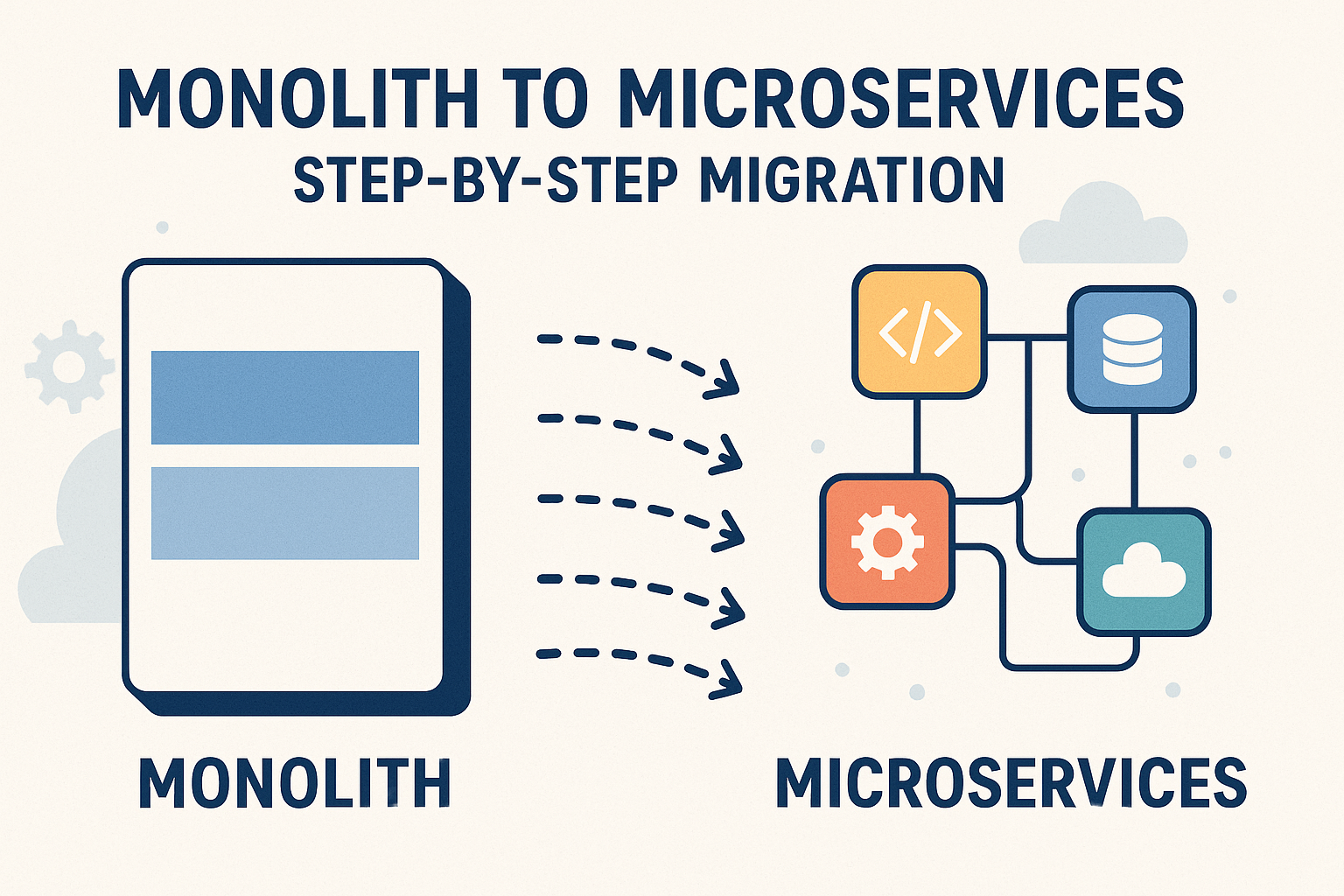Ever felt like your once-sprightly application has turned into a sluggish, overgrown beast? You know, the kind that takes forever to deploy, leaves you nervously checking logs for hours, and has everyone on the team whispering, “Maybe we should’ve started smaller…”? Welcome to the world of monoliths. In today’s post, we’ll explore how to break that hulking mass into nimble microservices — one thoughtful, intentional step at a time.
Why Move from Monolith to Microservices?
At its core, a monolith is a single, unified codebase where every feature—user auth, order processing, reporting, you name it—lives together. It’s simple to start, but as your app grows, that simplicity turns into complexity: a tiny change in billing can accidentally break reporting, deployments take ages, and scaling means throwing more hardware at the whole thing. In contrast, microservices split your application into smaller, independent services, each owning its own data and deployment cycle. Imagine your order service can scale like a sprinter when traffic spikes, while your internal reporting jogs along at its own pace. Suddenly, changes are safer, deployments faster, and teams more autonomous. Sound magical? Let’s get into how to do it step by step.
Step-by-Step Migration Journey
Step 1: Identify a Bounded Context
Start by mapping your application into logical domains: what’s “order,” what’s “user,” what’s “inventory.” I remember when our team drew colored sticky notes all over a whiteboard—there was coffee spilled, someone forgot to erase an old sketch, and a hilarious debate over where “notifications” belonged. But by the end, we had clear boundaries: these would become our first microservices.
Step 2: Extract the First Service
Pick one small, low-risk domain—say, user profiles. Create a separate repo, define APIs (REST or gRPC), and set up its own database schema. We extracted our billing module first, deployed it in isolation, and celebrated with a pizza party when the CI/CD pipeline finally green-lit without errors. Pure bliss!
Step 3: Implement Service Communication
Decide how services talk: synchronous calls (HTTP/REST) or asynchronous messages (Kafka, RabbitMQ). We started with sync calls for simplicity, then introduced event-driven patterns once we got comfortable. Pro tip: build in retries and circuit breakers early to handle network hiccups gracefully.
Step 4: Redirect Traffic Gradually
Use an API gateway or service mesh to route requests. Start by sending a fraction of user-profile traffic to the new service. Monitor errors, latency, and user feedback. Our first 10% rollout flagged a caching bug—caught before it impacted everyone!
Step 5: Decommission Monolith Code
Once you’re confident the new service handles its own domain flawlessly, remove that code from the monolith. Rinse and repeat for the next context until your monolith is…well, much smaller!
Common Obstacles & How to Overcome Them
- Data Duplication Woes: Splitting data can lead to Solution? Define clear ownership and use change-data-capture or event sourcing to keep data in sync.
- Operational Overhead: More services mean more deployment Embrace infrastructure as code (Terraform, Helm charts) to automate everything.
- Team Coordination: Teams can drift Combat this by holding regular “architecture guild” meetings to share lessons learned and keep APIs consistent.
- Latency Concerns: Network calls are slower than in-process Cache smartly, batch requests, and don’t be afraid to embed simple data copies where it makes sense.
Conclusion
Transforming a monolith into microservices isn’t a flip-the-switch affair. It’s a deliberate, incremental journey—one bounded context at a time, with careful testing, monitoring, and plenty of pizza breaks. But the payoff? Improved scalability, faster deployments, and happier developers who can own their code end-to-end. Ready to take that first step? Grab a marker, sketch your domains, and let the migration begin!





